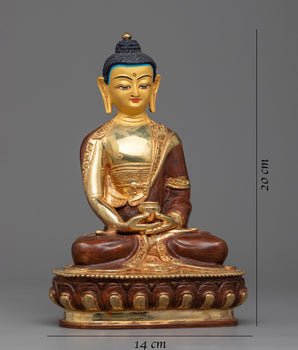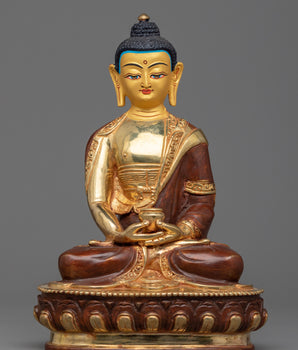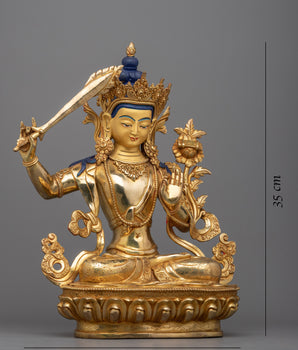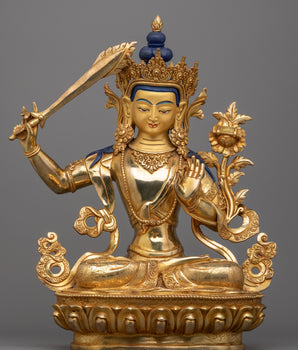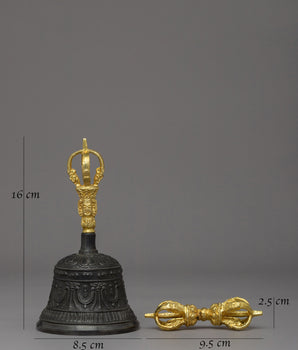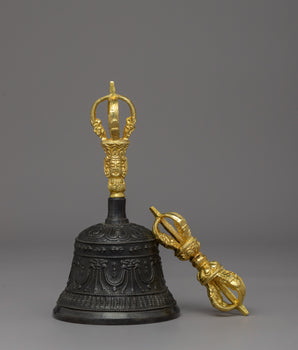Introduction — why vintage Thangka need special care
Thangkas are composite, sacred objects: painted panels (paper or cotton), silk brocade borders, wooden dowels, sometimes metal fittings or applique. Their mixed materials make them especially vulnerable to humidity, light, handling and inappropriate repairs. Treating them like ordinary framed art risks irreversible damage; good care balances practical everyday steps with respect for their religious and cultural role.
Vintage Thangka of Arya Avalokiteshvara: click here to View in Details
What Are Vintage Thangkas?
A vintage thangka typically refers to a hand-painted Tibetan Buddhist scroll that is at least 40–100 years old, though the exact definition can vary depending on context and region.
In art terms:
-
Antique thangkas are usually over 100 years old.
-
Vintage thangkas are generally between 40 to 100 years old.
-
Contemporary thangkas are newly painted, often in the last few decades.
The word vintage signifies that the thangka has acquired historical, cultural, or artistic significance due to its age, craftsmanship, and provenance. These paintings often display pigment fading, delicate brocade, or minor cracks in the paint — visual signs of authenticity and time.
Because vintage thangkas are older yet still relatively stable, they are ideal for careful display and preservation — provided the right environment and handling techniques are used.
Quick Tips To Keep Your Vintage Thangka Safe:
-
Keep away from direct sunlight and strong artificial light.
-
Stable room temperature (≈16–20°C) and relative humidity (RH) ~40–55%. Avoid sudden swings.
-
When handling, wash hands or use clean cotton gloves; support the whole object — don’t lift by rods.
-
Rotate displays — don’t hang permanently
-
In emergencies (flooding, heavy mold), isolate the object and contact a conservator
-
Temperature: Aim for 16–20°C (60–68°F). Slight variations are acceptable but avoid extremes that accelerate degradation.
-
Light: UV and visible light fade pigments and weaken textiles. Use low lux levels for display, UV filters on windows and lights, or display in a case with UV-filtering glazing. Rotate items off display regularly.

Storage: best practices for rolled and flat storage
-
Flat storage (best when possible): Store flat, supported on archival board and between layers of unbuffered, acid-free tissue. Flat storage avoids bending stresses.
-
Rolled storage (common historically): If rolling, roll on a wide-diameter padded tube with the painted surface facing inward and interleave with soft, acid-free tissue. Use a long tube to minimize tight curvature; place the rolled object in a clam-shell archival box to protect from dust, pests and handling. Suspend or cradle the roll so weight isn’t carried unevenly.
-
Avoid plastic sheeting directly against paint. Use breathable archival materials.
Cleaning & maintenance of vintage Thangka
-
Dusting: Use a very soft brush (natural-hair conservation brush) held horizontally to gently remove loose dust from the brocade and margins. Don’t brush paint layers.
-
Spot-checking: Never use household cleaners, water or solvents on painted areas. If the thangka is stained or shows active mold, isolate it and contact a professional.
Emergency response to water, mold, pests
-
If wet: Carefully unroll (if possible) on clean absorbent layers; blot (don’t rub) excess water with uncolored absorbent paper or towels. Allow controlled air-drying in a well-ventilated, shaded area; do not use heat or sunlight. Place blotting layers beneath painted areas to remove moisture away from the paint. Contact a conservator ASAP.
-
If mold present: Wear protective equipment (mask, gloves). Isolate the object from other collections. Do not try to “bleach” mold — it can damage fibers and pigments. Professional treatment is required.
-
Pests: Store with good housekeeping; inspect periodically. If insect damage is found, isolate and consult a conservator—do not use household pesticides on art.
Restoration: limits, ethics, and when to call a conservator
-
Thangkas are composite and often sacred — conservators must balance material stabilization with respect for religious/cultural values. Inappropriate treatments (strong adhesives, overpainting, rough re-lining) can be worse than the original damage. If the thangka has paint losses, detached paint, active insect damage, or complex losses, consult a textile or paintings conservator with thangka experience.
-
Look for conservators who publish or teach on thangka conservation (workshops by ICCROM, or specialists like Ann Shaftel) — expertise in traditional materials (earth pigments, animal glue) matters.
Frequently Asked Questions About Vintage Thangka Care
Q: Can I display a thangka behind glass?
A: Yes — use UV-filtering glass or acrylic and make sure there’s a small spacer between the glass and the painting. Avoid sealing the frame airtight to prevent moisture buildup. Even with glass protection, rotate the thangka periodically to minimize light exposure
Q: Is it okay to wash a thangka cloth?
A: No. Washing can dissolve natural pigments and weaken the canvas and silk. Only professional conservators, using controlled humidification or solvent-free cleaning, should perform such treatments.
Source: JAIC Conservation Journal
Q: How often should I unroll a stored thangka?
A: Avoid unnecessary unrolling. Once or twice a year is enough for inspection. Always unroll on a flat surface with clean support and minimal handling to prevent stress on the silk and paint.
Q: What temperature and humidity levels are safest for long-term storage?
A: Ideally, maintain a temperature of 16–20°C (60–68°F) and a relative humidity (RH) of 40–55%. Fluctuations can cause cracking or mold. A small digital hygrometer is an affordable tool to monitor these conditions.
Q: How can I tell if my thangka needs restoration?
A: Warning signs include flaking paint, detached silk, visible mold, water stains, or brittle fabric. If you notice these, stop handling the piece and contact a thangka or textile conservator immediately.
Source: Getty Conservation Institute
Q: What’s the best way to protect thangkas from insects?
A: Regular inspection is key. Keep the storage area clean and dry, avoid cardboard boxes, and use archival materials. Cedar blocks or lavender sachets (kept away from direct contact) can help deter moths naturally.
Q: My vintage thangka smells musty — what should I do?
A: A musty odor usually indicates trapped moisture or mild mold. Air the thangka gently in a dry, shaded area (never under direct sun). If the smell persists, a conservator should evaluate for hidden mold or fungal activity.
Q: Can I repair small tears on the brocade myself?
A: Minor textile tears should be stabilized, not repaired, unless done by a conservator. Avoid sewing through old silk or using fabric glue. Store the thangka flat until you can have it professionally assessed.
Q: Are vintage thangkas suitable for daily shrine use?
A: Yes, if handled respectfully and displayed under controlled light and humidity. However, keep valuable or fragile vintage thangkas primarily for special occasions, and use high-quality prints or newer pieces for everyday offerings.











